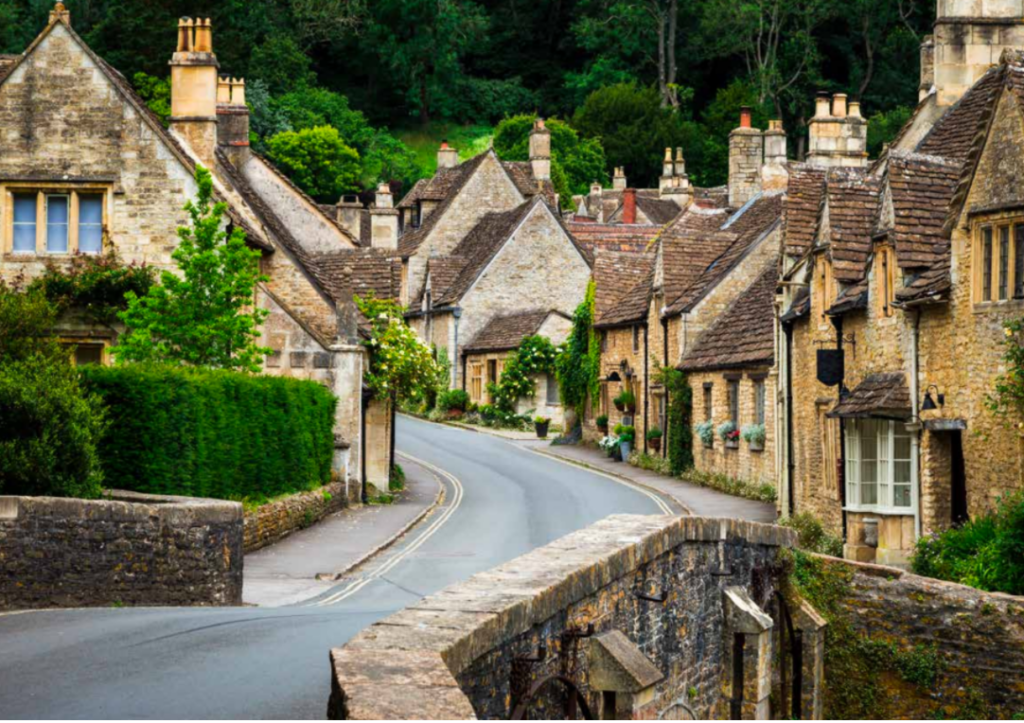RedBook’s take on the ‘Planning for the Future’ landmark reforms and the key points for home owners in London and the country, and for the prime residential sector
Is this the planning reform we have all been waiting for?
The Government’s long-awaited ‘Planning for the Future’ White Paper, published in August 2020 with consultations being sought with a deadline of 29 October, has been heralded as the first major shake-up of the system, as set out in the Town and Country Planning Act in 1947. The radical proposed reforms, envisaging land across England being divided into three categories: Growth, Renewal or Protection, aim to overhaul the entire system, speed up the planning process and ensure that the chief obstacles in the complex planning plumbing system are unblocked. The Government is aiming to implement the new system by the end of 2024.
In recent weeks Jenrick has been in the political limelight, energetically jousting with mayors and councillors in regional pandemic battles, but in the planning department he champions a utopian vision: combining local standards of beauty and putting design and quality at the heart of the process, while building new houses for the future.
Jenrick sets the scene: ‘This Government doesn’t want to just build houses. We want to build a society that has re-established powerful links between identity and place, between our unmatchable architectural heritage and the future, between community and purpose…These are a once in a generation set of reforms that lays the foundations for a better future’.

Protecting local character is at the heart of the White Paper
The White Paper will ‘make it easier for those who want to build beautifully through the introduction of a fast-track for beauty through changes to national policy and legislation, to automatically permit proposals for high-quality developments where they reflect local character and preferences’. Part of this system is the concept of design codes and pattern books, which Jenrick explains stem from ‘the idea that helped build some of this country’s most beautiful and liveable places, like Bath, Belgravia and Bourneville.’
In the White Paper, the Prime Minister Boris Johnson said of the current planning system ‘the whole thing is beginning to crumble and the time has come to do what too many have for too long lacked the courage to do—tear it down and start again. This is what this paper proposes. Radical reform unlike anything we have seen since the Second World War.’
The question is how will it work and what does it mean for the prime residential sector?
Clive Aslet, architectural expert and RedBook advisor, unravels the consequences of the proposed sweeping reforms

Clive Aslet
It’s unfortunate that the Housing Secretary Robert Jenrick is known to the public principally for meeting the controversial Richard Desmond at a fund-raising dinner, shortly before giving planning permission to a Desmond development in Tower Hamlets. Because Jenrick is that rare thing, a minister who loves his brief and is determined to leave the world a better place than he found it on taking office. Evidence of this enlightened approach is the planning White Paper. The Prime Minister calls this ‘long overdue’. The object, according to Jenrick, is to create ‘a much faster and simpler system,’ compared to existing Byzantine and clunky arrangements, which began life in the 1940s.
But that’s only the start. Jenrick is also championing the late aesthetic philosopher Sir Roger Scruton’s legacy, expressed in the report of the Building Better, Building Beautiful (4B) Commission, written with his co-chairman Nicholas Boys-Smith in January 2020. This is an attempt to put beauty at the heart of the planning system—a brave move considering that such a consideration barely features at the moment.
Jenrick has quoted Scruton’s line that ‘styles may change, details may come and go, but the broad demands of aesthetic judgement are permanent.’ One of the White Paper’s core principles is to make new housing developments more acceptable to the public. But country house architects hope that a climate favouring beauty will help their schemes get approval. According to the Government’s website, ‘the proposals will ensure councils prioritise good design…and create a fast-track for approving beautiful buildings.’ This could mean, says Boys-Smith, co-chairman of the 4B Commission but not involved in the White Paper, that ‘in some situations architects will be able to get their projects through without so much pre-work on planning’.

Take your home to new heights with extra storeys
Conversely, one eye-catching proposal that doesn’t obviously promote beauty has been to allow owners to add an extra two storeys to their buildings without needing to obtain full planning permission. This could in theory create a lot of extra space for accommodation in towns and cities, but residents of Belgravia, Mayfair or even Pimlico, who want to increase the size of their super prime mansions may be disappointed. The new rule will not apply to listed buildings or ones in Conservation Areas—and many high-end properties are covered by one or other of those designations. Still, if your residence is along the river Thames, whose banks aren’t always covered by conservation areas, or a relatively recent development such as Docklands, you may be lucky.
In his keynote speech to the Create Street annual conference, Jenrick highlighted Nansledan in Cornwall, an extension to Newquay on Duchy of Cornwall land led by the Prince of Wales, as a beacon for the future. ‘Walking through Nansledan, I saw colourful homes, built with Cornish character and materials. A community that is walkable, green.’ I spoke to the architect of Nansledan, as he was driving from his office to Newquay, where he has been designing the new settlement for the Duchy of Cornwall: just the sort of large scheme that the White Paper is intended to prioritise. He spoke of ‘a surge of interest from country-house clients since the Covid pandemic got underway’, with London having lost some of its shine and successful young entrepreneurs and City boys able to work from homes in Hampshire, and pointed to the opportunities which the proposed planning reforms will offer to the buyers of large country estates. They could benefit from measures to promote new housing on landed estates: the so-called legacy projects, on the Duchy of Cornwall model, of the type already pioneered by Blenheim and Burghley. In the past this might have seemed impossible. ‘Legacy projects will get an easier ride through the planning system, as well as tax breaks on the sequential sale of land,’ he added. Traditional landed estates want to build well because, with their long time horizon, they have to live with the consequences of developments: their owning families will have to drive past them every day, in perpetuity. This idea is close to Mr Jenrick’s heart.
As Lucian Cook, Head of Residential Research for Savills, explains, the Government is ‘casting its net wider in identifying land suitable for development.’ Planning authorities will have to work with local people to prepare design codes, long before the latter may see a need for them; they’ll have to think more strategically. ‘It will be interesting to see where high quality, design-led developments of prime property sit within this new planning landscape,’ but good design will continue to ‘enhance and protect the value of property,’ as it always has.
For another prominent architect well-versed in planning matters, the liberalisation of planning, although intended to help volume house-building, could provide a dividend for the country house. ‘It will free up more sites,’ he says. Permission to build a new village, for example, will change the way that land around it is regarded. Parcels of land on the edge of a development could be left over, creating opportunities for country-house clients. But let’s not get too excited. ‘Nothing will happen for a year,’ and who can say how politics may have evolved in that time? ‘Jenrick may have gone by then, and the new Secretary of State might have a different agenda.’ In the game of politics, the whiff of scandal that lingers from the Desmond deal has detracted Jenrick’s certainty of survival. For all that, his personal dedication to the cause of good architecture means we must hope he stays in post.
‘Planning for the Future’: the White Paper at a glance. Our summary of the Government’s main aims relevant to the prime residential sector:
How is the system being reformed, in a nutshell?
- The system is to be overhauled and replaced with a clearer, faster, rule-based system with land divided into zones according to development opportunity: Protected, Renewal and Growth.
- In many cases the permission for principal development will be secured automatically, removing a major obstacle. Previously could take 2-3 years.
What is included in the new aim for ‘building beautiful’?
- The Government has introduced a ‘fast-track for beauty’ scheme to incentivise attractive and popular development.
- Design guidance and design codes according to local area will be introduced, alongside a governing body, which will be set up to support the delivery of locally-popular designs and each authority will have a chief officer for design to oversee this.
What exactly is the ‘fast-track for beauty’ scheme?
- Schemes which comply with local design guides and codes will have a positive advantage and greater certainty about their prospects of swift approval through the system.
What will be the changes for listed buildings and Conservation Areas?
- Local plans will clearly identify and protect the location of internationally, nationally and locally designated heritage assets, such as World Heritage Sites and Conservation Areas, as well as locally important features such as protected views.
What is the new ‘digital approach’?
- Digital and online systems will allow neighbourhoods and communities to have a voice in the future of their area and make it easier to raise views about projects.
- New rules, data, interactive maps, and plans will move online to make planning information easier to access and understand. Currently only 1% of local residents engage with the creation of their local plan.
What are the key sustainability issues?
- The new system will target those areas where a reformed planning system can help the environment most.
- Important natural assets will be preserved and the development potential of brownfield land will be maximised.
- Improve energy efficiency standards for buildings to help to deliver the commitment to net-zero by 2050. All new buildings to be ‘zero-carbon ready’.
- Development plans, no matter what size, will have to pass a new ‘sustainable development test’.
What are the recommended planning implications on adding storeys to a home?
- Under new laws you no longer need planning permission to extend your home by adding extra storeys to your building.
- If your house was built before July 1948 or after 28th October 2018, however, this rule does not apply. Your property will also not qualify if it is in a Conservation Area, an Area of Outstanding Natural Beauty, a National Park, the Broads or a World Heritage Site and finally if it is a listed building.
RedBook can source specialists to advise on all aspects of the planning process. Please get in touch here to find out more.

